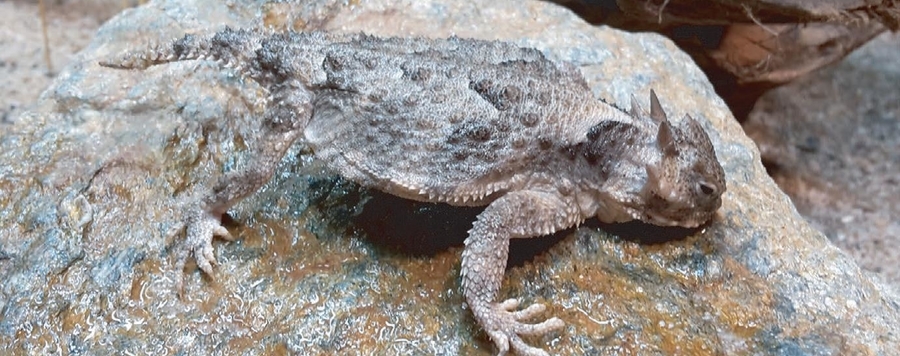
Phylogenetic and morphological influence on habitat choice in moisture-harvesting horned lizards (Phrynosoma spp.)
In previous studies, the superhydrophilic skin of moisture-harvesting lizards has been linked to the morphological traits of the lizards’ integument, that is, the occurrence of honeycomb-shaped microstructures. Interestingly, these structures can also cover the skin of lizards inhabiting wet habitats. We therefore tested the influence of the microstructures’ main features on the habitat choice and wettability in the genus Phrynosoma. The genus Phrynosoma comprises moisture-harvesting species as well as nonspecialists. Lizards of this genus inhabit large areas of North America with diverse climatic conditions. Remarkably, the differences in the manifestation of microstructures are just as versatile as their surroundings. The phylogeny of the lizards as well as the depth of their ventral microstructures, though independent of each other, correlated with the precipitation in their respective habitat. All other morphological traits, as well as the skin's wettability itself, could not predict the habitat of Phrynosoma species. Hence, it is unlikely that the microstructure influences the wettability, at least directly. Hence, we presume an indirect influence for the following reasons: (a) As the ventral side cannot get wet by rain, but the belly could easily interact with a wet surface, the microstructure might facilitate water absorption from wet soil following precipitation. (b) We found the number of dorsal microstructures to be linked to the occurrence of silt in the habitat. In our study, we observed scales being heavily contaminated, most likely with a mixture of dead skin (after shedding) and silt. As many lizards burrow themselves or even shovel sand onto their backs, deploying the substrate might be a mechanism to increase the skin's wettability.






